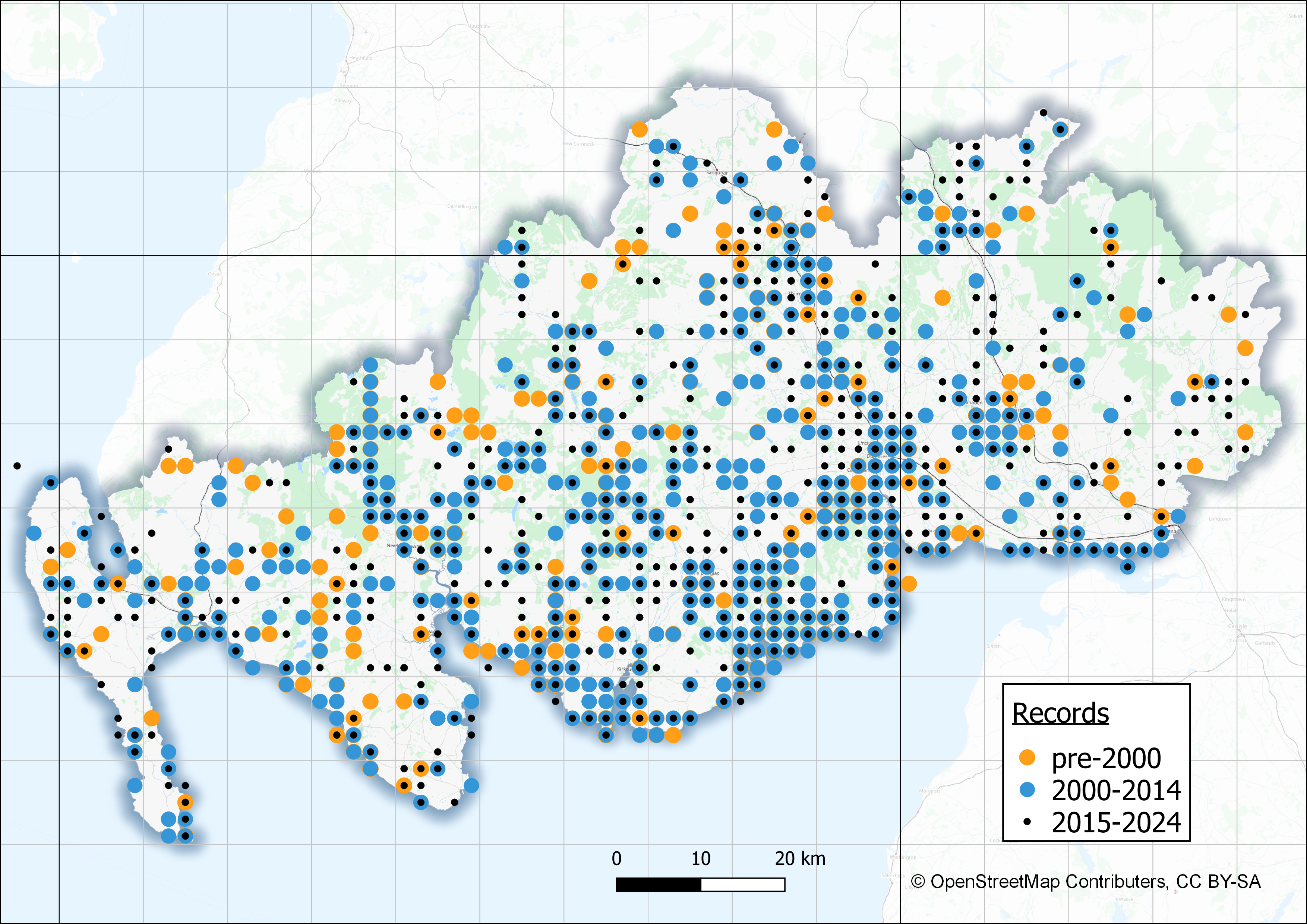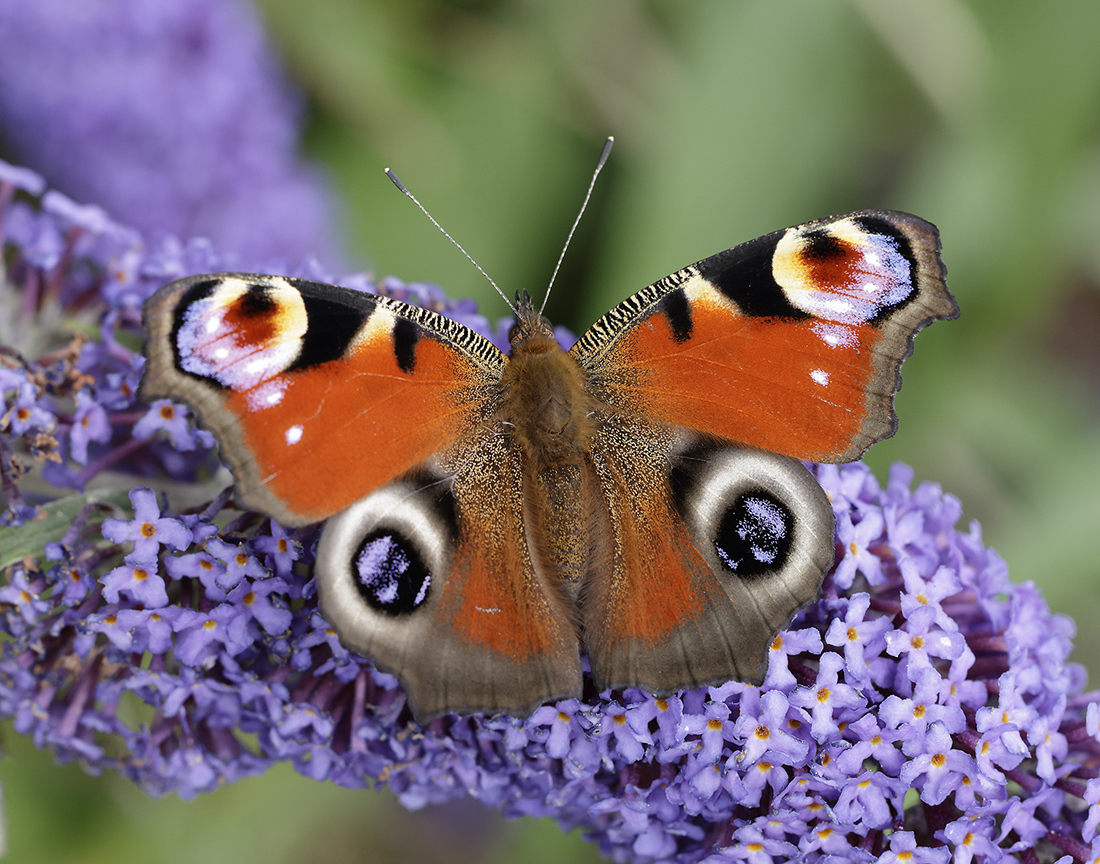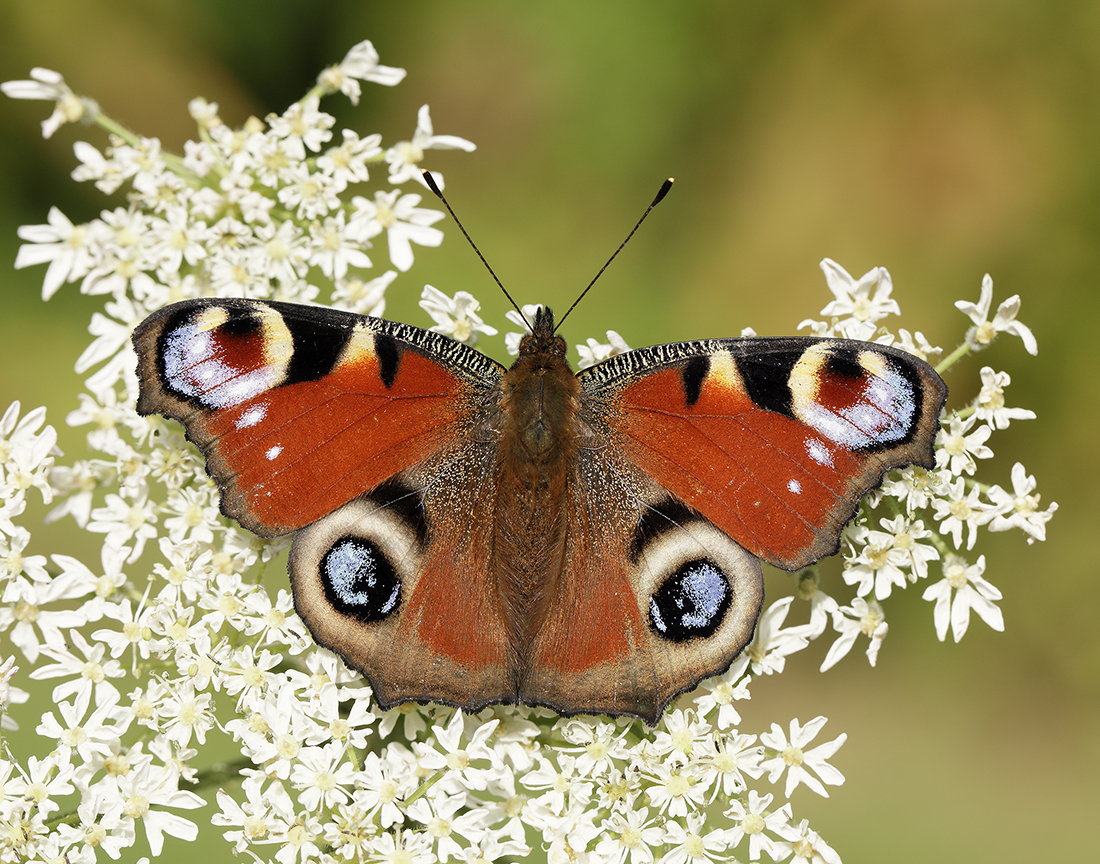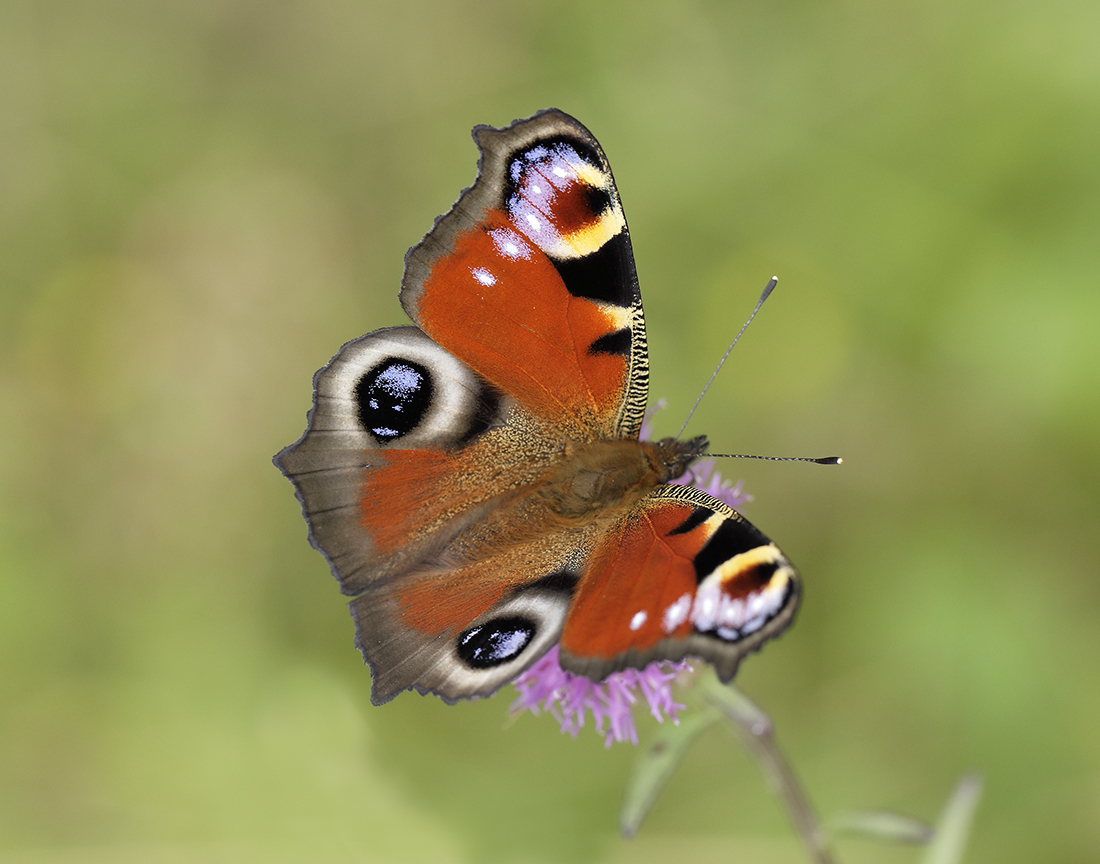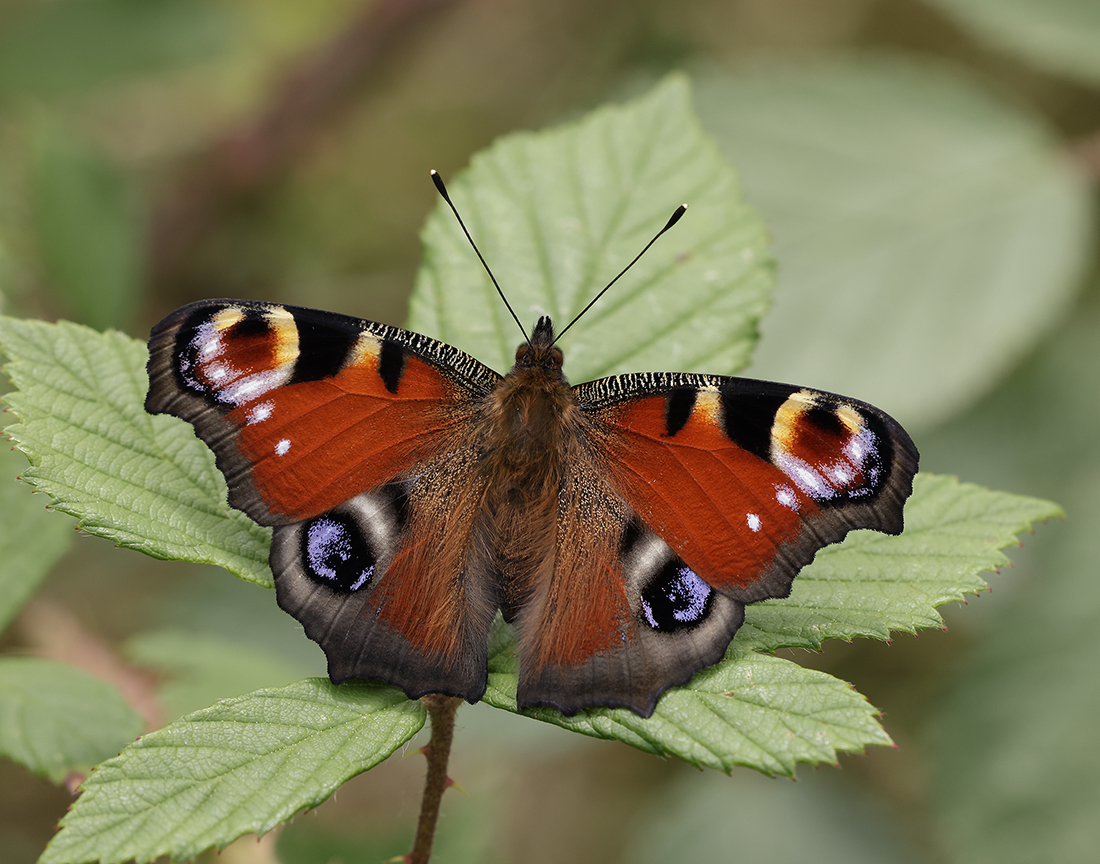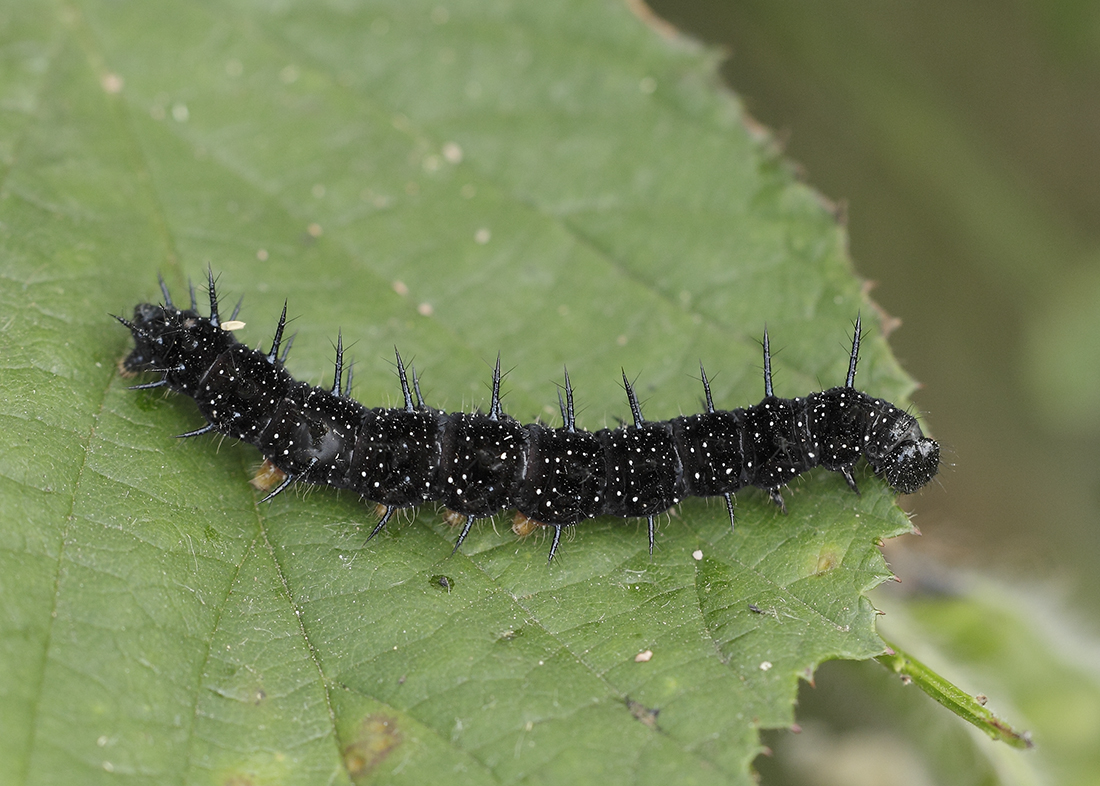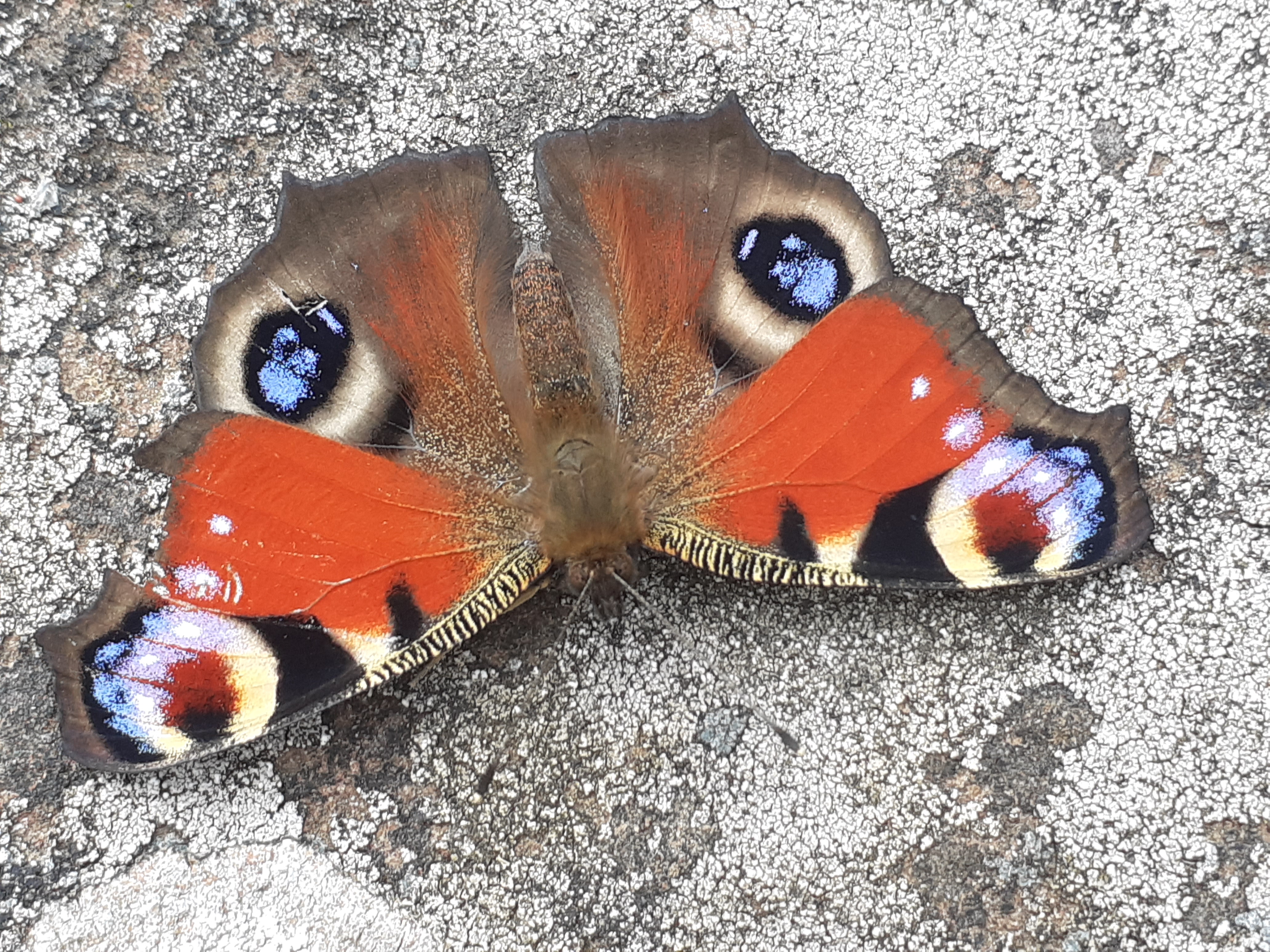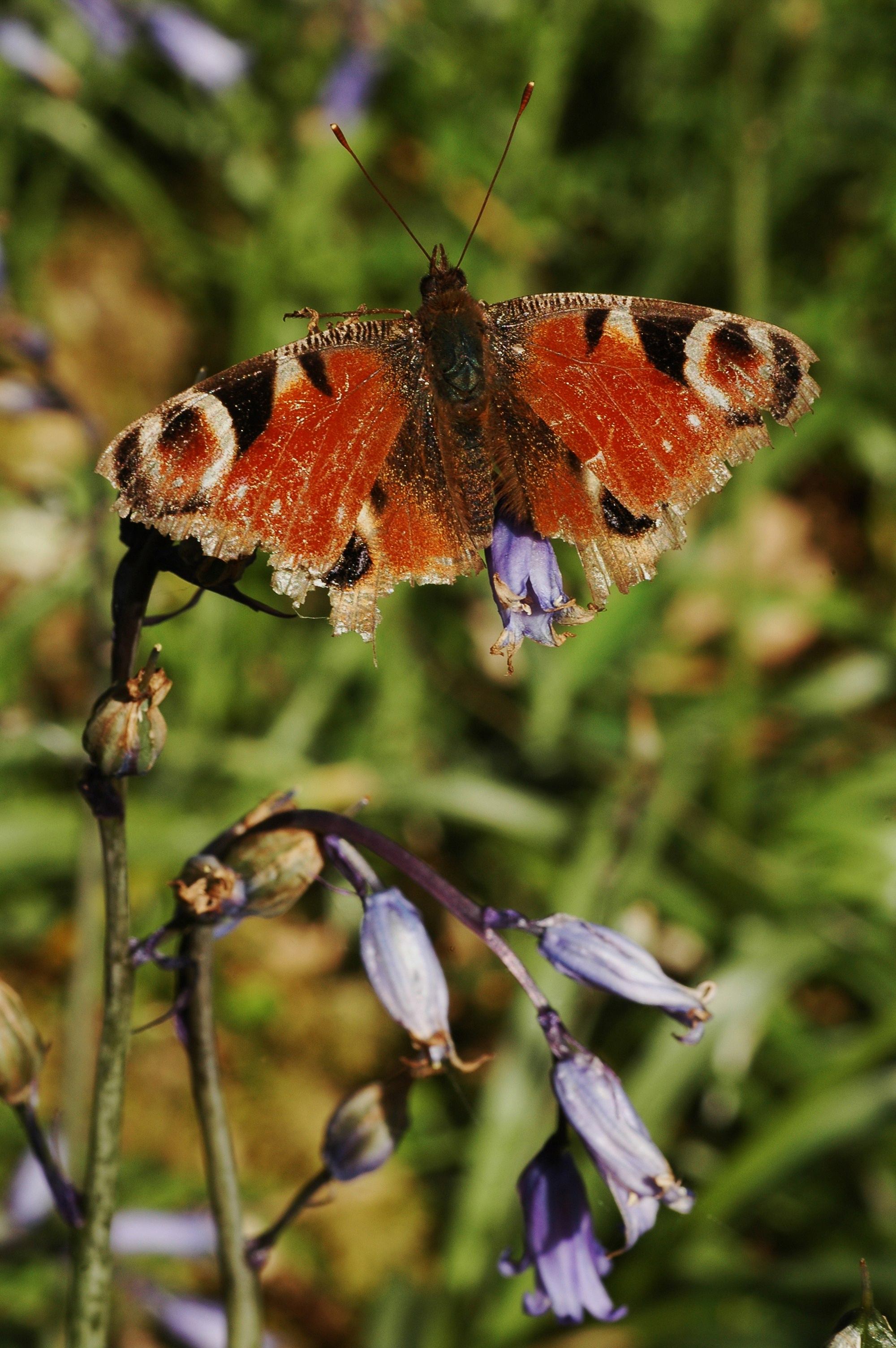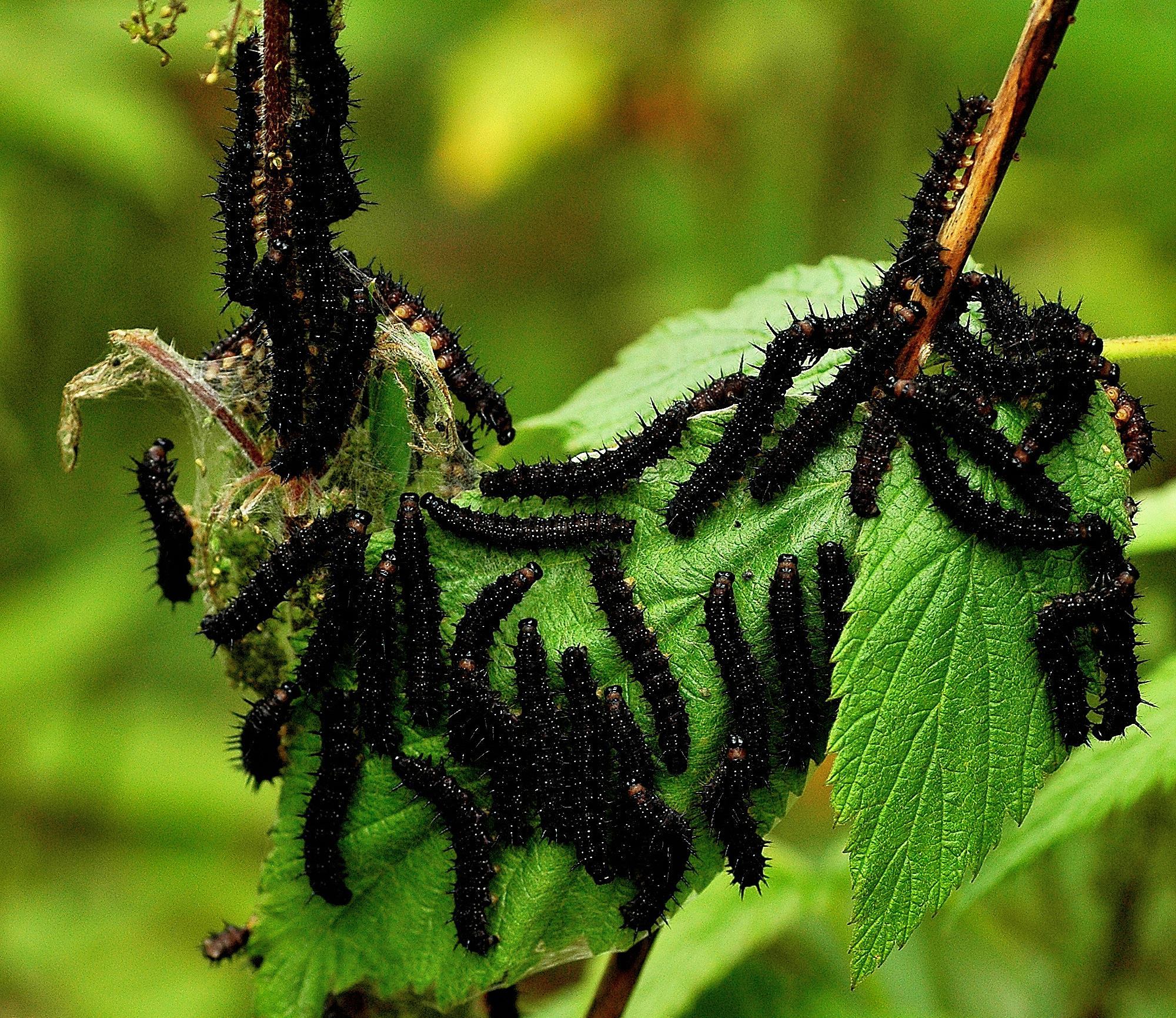A century ago the Peacock became very scarce in Scotland but seems to have hung on in Galloway. Since then, it has spread back quickly, and in 2018 had a particularly good year. It has been recorded throughout the region.
Identification
The Peacock is one of our most recognisable butterflies due to the stunning eye-spots that have evolved to mimic a large predator thereby helping it evade the attentions of small birds and mammals. It is a regular and common visitor to Scottish gardens and parks.
Life cycle & flight period
Having overwintered as an adult it is one of the first butterflies to be seen in the spring. It may be seen in any month and has two generations a year, the adults usually peaking in mid-March and again in late summer. Some Peacocks go into hibernation in early August but others will still be flying into November.
Larval foodplant
The mated females will choose tall, vigorous plants of Common Nettle for egg-laying, that are in sunny but sheltered locations. The black, spiky caterpillars live communally in a silken web that protects them from predators and helps raise their temperature. The pupae will be formed away from the nettle patch on a tree trunk or fence post and most will hatch in a couple of weeks.
Habitats
In common with the Small Tortoiseshell, the Peacock is most often seen in urban areas, field edges and open woodland where nettles thrive on fertile ground.
The summer brood of freshly emerged Peacocks are conspicuous in our gardens and parks. Buddleia is one of their favourite nectar sources, but they will also feed on many other garden plants, such as Michaelmas Daisy, Tansy and Verbena, as well as native plants including Common Ragwort, Hemp-agrimony, and Common Knapweed.

